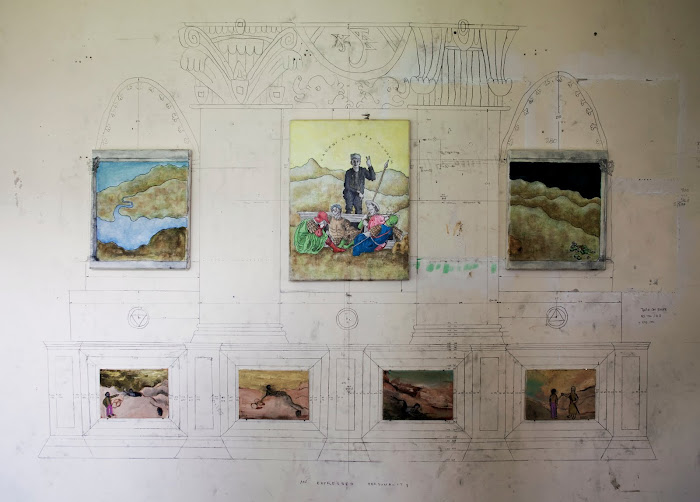Okay, so Kant pointed out that space, time, and causality are not properties of the world, of things-in-themselves, but rather properties of the mind that allow us to understand the world. All objects that we can apprehend exist in space and time, and have causes and effects. We can only apprehend objects in those terms; any object not in space, in time, and subject to causality would be unknowable. This means that space, time, and causality are conditions that must be met for us to apprehend an object. But things-in-themselves are not dependent on the conditions we have for apprehending things. Those conditions are properties of our minds, not of the things. Space, time, and causality are subjective framing devices with which we structure our sensations and combine them into the coherent world we observe. The world we experience, the world of appearances, is dependent on the properties of our minds.
Some people go on from this to posit an ultimate reality beyond the world of appearances. But such an underlying reality, if it existed, would be completely unknowable. It would be completely separate from us. In what way then can it underly the world of appearances?
If apparent things are constructed by the classifications and arrangements of sensation by our mind, they are obviously not real. There is no thing-in-itself, and each person constructs the world, not according to any truth or reality, but according to their own needs and values.
Kant also points out that, since the world of appearances is constructed by the mind, whatever unity it has is provided by the unity of the subject perceiving/constructing it, and that this is a reciprocal arrangement. The unity of the object is brought about by the subject grasping the different elements of the object and combining them into a whole, and the unity of the subject is possible only by doing this. It is like what the art theorists call 'intertextual space', where the meaning of a work of art is generated by the interaction between the work and a viewer. Or, as we should say, a work of art is created by the interaction of a subject with an object. That object could be a painting on a wall or it could be the world as a whole.
However, neither the object nor the subject are a unity. The self is seething mass of contradictory impulses, desires, and needs, and the world it constructs is similarly contradictory. But there's more. If the world of appearances is unreal and illusory, and it has a reciprocal relationship with the self, then the self too is unreal and illusory. They are both fictions. Nothing is real.
11 August 2008
Subscribe to:
Post Comments (Atom)

3 comments:
A very simple analogy of this is, I think, the one of the blind men and the elephant. Old Sufi story.
Some nice Buddhist text I found on the interweb:
We must first directly comprehend the spiritual reason of things, and then let us with this insight look upon things that are about us. It would be madness to deny the reality of the phenomenal world, but in the midst of these realities the enlightened see their non-reality. There towers a huge mountain, here lies a boundless ocean, birds are singing, trees are growing, and I sit here looking over the verdant meadow; yet, in spite of all these, nay, indeed by reason of these, I believe in the nothingness of existence, in the non-reality of realities, and in the absolute oneness of all things; and it is thereby that I gain my peace of mind and realize the sense of perfect freedom in my everyday life.
That is an excellent quote!
Post a Comment